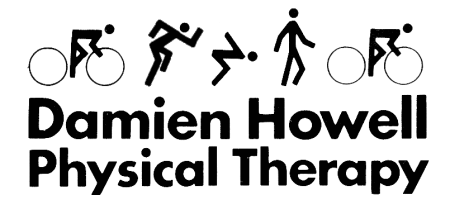Escaping the Drama Triangle: Practical Tactics for Direct Dialogue Between Physical Therapists & Surgeons.

Earlier in my Physical Therapy career, I joined a pain management team at a teaching hospital. Team members included an Anesthesiologist, Primary Care Provider, Physical Therapist, Psychologist, and others. We held team meetings to discuss chronic pain patients. Few would dispute that face-to-face real-time communication was a particularly effective way to provide care. Unfortunately, the team abandoned the face-to-face real-time meetings.
I believe the reason was that administrators did not consider the time spent at team meetings as billable.
The assumption is that advances in communication technology are more efficient than real-time team meetings.
Despite the advances in communication technology, as a Physical Therapist, there are times when I desire real-time communication with healthcare team members.
Complex chronic pain always requires an interdisciplinary team. At least three team members, including the patient, coordinate healthcare decisions. When communication between these individuals is not real-time, there is potential for misunderstandings, as typically occurs in the telephone game.

Children whispering a message from one to the other
The game of telephone is a game where a message is whispered from person to person, and the meaning of the message often changes significantly by the time it reaches the last person.
Relaying information is triangular communication a process of involving a third person in a two-person relationship. Triangulation communication can be a constructive and stabilizing factor. Or triangulation communication can have negative, destructive effects. A negative example is the model of social interaction, the Karpman Drama Triangle. The actors in the drama are the victim, the rescuer, and the persecutor.

3 individuals having dramatic communication Karpman Drama Triangular Communication
The Victim feels powerless and helpless, the Rescuer tries to "fix" others, and the Persecutor blames and criticizes. These roles are not static, and individuals can shift between them within the same interaction, often creating a destructive cycle of drama that prevents healthy conflict resolution.
The following are my thoughts as a Physical Therapist on how to avoid triangular communication conflict with surgeons.
First, recognize that triangular communication with conflict is occurring.
What are the signs of triangular communication with conflict?
- Indirect communication – Patient relays surgeon’s comments to Physical Therapist instead of the surgeon communicating directly with Physical Therapist.
- A conversation between two of the parties may impart, “Are you on my side on this issue?”
- Feeling pressured to choose who is right relative to the surgical options or rehabilitation process.
- Feeling ignored – My communication with the surgeon, whether it is fax, phone message, or message through the patient, is often one-way communication.
Of course, the most obvious solution to triangular communication with conflict is to seek more direct real-time communication. With all parties involved, if possible.
Phone calls to speak directly to surgeons are through automated phone systems, making direct two-way communication exceedingly difficult.

An individual talking to an AI robot's message can get distorted
Tactics that I have used to have more direct communication with surgeons include:
- Going with the patient to their follow-up visit with the surgeon.
- Asking the patient to schedule a telehealth visit with the surgeon and inviting me in as a guest. Or having the patient ask for “FaceTime” on a smart smartphone during the office visit.
- Arranging my schedule so that I can be available to the phone during the time that the patient’s follow-up visit with the surgeon is scheduled.
- In addition to faxing my report to the surgeon, I share the report directly with the patient. I request that the patient email the report to the surgeon prior to their follow-up visit. This way, both the patient and the surgeon see my thoughts directly. In the report, I make a point to ask evoking questions. And finish my report with a request for the surgeon to reach back to me after the patient’s follow-up visit.
Tactics I have used to get the surgeon to communicate back to me include coaching the patient to encourage direct communication back, including:
When you go for a follow-up visit with your surgeon. Make sure you have my contact information on your smartphone. When you see the mid-level professional (RN, Nurse Practitioner, Physician Assistant) before you see the surgeon, ask him/her, can they send the results of the consultation office visit, after the visit summary, to my Physical Therapist? Do I need to sign a HIPAA consent form so the surgeon can release medical information to my Physical Therapist? Here is his/her contact information. At the end of the visit with the surgeon, ask, “Can you communicate your thoughts to my Physical Therapist”? Here is her/his contact information.
If you feel like a victim. If you feel like a persecutor. Be open to requesting a real-time 3-way phone call or video call. The result may be a continuation of the drama. However, there is a good chance the feeling of kumbaya will break out.
The information on this website is not intended or implied to be a substitute for professional medical advice, diagnosis, or treatment. You are encouraged to perform additional research regarding any information available through this website, with other sources, and consult with your physician
